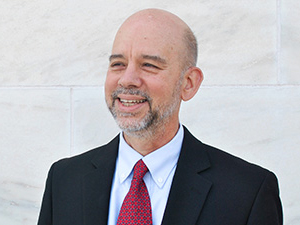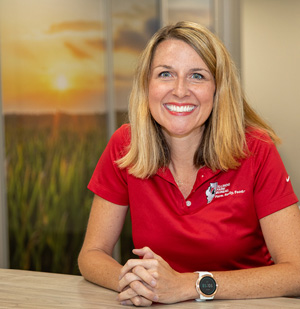USDA has a daunting task as it seeks to pick the winners for one of the biggest ag lotteries ever: the $1 billion Partnerships for Climate-Smart Commodities program, whose first round of funding drew more than 450 proposals seeking $3 billion to $4 billion.
“We’re really excited about the response,” Ag Secretary Tom Vilsack told Senate appropriators last week. Applications came from about 350 applicants covering all 50 states, he said.
“The good news is there’s a lot of pent-up demand,” said Ferd Hoefner of Farm, Food, Environment Policy Consulting. The bad news, he noted, is a lot of people will be disappointed when their proposals are not funded.
USDA said it is “currently in a pre-screening process where applications are being processed, logged, and evaluated for completeness. Then, we will move to the full review of applications against the technical criteria provided in the funding opportunity.”
Funding awards for the first round of proposals, which are in the $5 million to $100 million range, “are expected later this summer,” the department said, adding it has not “predetermined” how much will be awarded in the first round of funding and how much in the second, which is for projects in the $250,000 to less than $5 million range. That application deadline is June 10.
“Proposals in the first funding pool include large-scale pilot projects that emphasize the greenhouse gas benefits of climate-smart commodity production and include direct, meaningful benefits to a representative cross-section of production agriculture, including small and/or historically underserved producers,” USDA said.
The second round will include proposals “that emphasize the enrollment of small and/or underserved producers, and/or monitoring, reporting and verification activities developed at minority-serving institutions,” USDA said.
 Ferd Hoefner, Farm, Food Environment Policy Consulting
Ferd Hoefner, Farm, Food Environment Policy Consulting
Hoefner says USDA’s task will inevitably involve political considerations as it seeks to find a balance among commodities and geographies. The range of commodities includes more than three dozen crops, as well as aquaculture and vertical farming.
Some groups were reluctant to discuss their proposals, which USDA has not made public. Others released limited information. Numerous groups provided letters of support for projects; the American Farm Bureau Federation announced it was backing five.
One large project that has already received $1 million in funding from the Natural Resources Conservation Service is Farmers for Soil Health’s effort to essentially double the amount of corn and soybean acreage using cover crops to 30 million.
A partnership among the United Soybean Board, National Corn Growers Association and National Pork Board, FSH is seeking $100 million — $72 million in payments to farmers and $18 million in technical assistance through state commodity organizations, with the remaining $10 million going for “administrative costs, outreach to underserved community, general communications, and supporting the development of an online platform for enrolling farmers and marketing their ‘climate smart’ corn and beans,” said John Johnson, former chief operating officer of the National Pork Board who is now coordinator of Farmers for Soil Health.
FSH’s three-year plan would target 8,000 to 10,000 operations in the 20-state focus area and offer farmers a declining cost-share ($25 per acre, going down to $15 and then $10).
Vilsack has mentioned the effort publicly several times since NRCS announced it was providing $1 million in technical assistance to FSH in January.
“I’d be shocked if that didn’t get funded,” Hoefner said.
Another $100 million proposal comes from Rural Investment to Protect Our Environment, or RIPE, a nonprofit whose proposal would pay farmers $100 an acre to implement conservation practices, a figure that dwarfs payments currently being offered by the private sector for carbon sequestration.
"A price floor that is above policy costs and allows for a reasonable return. That's our motto," RIPE founder Aliza Wasserman-Drewes says. The proposal covers 394,000 acres of cropland, 153,000 of pastureland and 74,000 animal units in Minnesota, North Dakota, Virginia and Arkansas.
Cover crops, for example, are delivering $100 to $120 per acre in benefits, she says, with water quality improvements making up about half of that.
The model of promoting conservation practices by providing a cost-share payment isn't working, she says, adding that RIPE is trying to persuade farmers to support its RIPE100 program or something like it in the next farm bill.
One of the proposals endorsed by AFBF is led by the University of Illinois, with partners including the Illinois Farm Bureau, IFB’s charitable foundation, the IAA Foundation, GROWMARK Inc., and three of GROWMARK’s retail grain units, FS Grain, Western Grain Marketing and Total Grain Marketing. Finally, Software Solutions Integrated and Bushel Inc. are also involved.
The $67 million, 100,000-acre Illinois-specific proposal will try to answer the question of how much of a premium the supply chain and consumers are willing to pay for grain that is produced using specific climate-smart practices. Producers will be paid upon enrollment in the project and upon delivery of the grain, said Lauren Lurkins, director of environmental policy at Illinois Farm Bureau.
She said IFB was able to get support from members of Congress, from “some of the companies who are GROWMARK’s current grain buyers,” as well as others representing aspects of the supply chain interested in looking at the “willingness of the consumer to pay more.”
 Lauren Lurkins, Illinois Farm Bureau
Lauren Lurkins, Illinois Farm Bureau
Lurkins said the project will focus on "encouraging farmers to adopt climate-smart practices; measurement and verification of the climate-smart benefits associated with those practices; and testing a mechanism for incentivizing farmers based on pricing grain to reflect the cost of production and the life-cycle, climate-smart benefits of the grain."
Another AFBF-endorsed project would be at the University of Tennessee, where Patrick Keyser heads The Center for Native Grasslands Management. The $34 million proposal would look at the implementation of improved management on grasslands in nine states east of the Mississippi, from “Missouri to South Carolina, Virginia to Arkansas,” he said.
Looking for the best, most comprehensive and balanced news source in agriculture? Our Agri-Pulse editors don't miss a beat! Sign up for a free month-long subscription.
“Our focus is going to be all about the grass itself,” Keyser said. “We’re not so much worried about feedlots or the downstream end of the beef value chain.”
The project will seek to make what Keyser calls the “carbon-storing machine” of U.S. grasslands more climate-friendly, which would reduce the carbon footprint of cattle raised on the grass. Among the practices to be encouraged are improved grazing management, such as rotational grazing, and the use of native grasses that thrive in hot weather. The project also will seek to reduce the use of inorganic nitrogen such as urea, and promote both urease inhibitors and alternative forms of nitrogen such as legumes.
Participants include a dozen land-grant universities and a major meat processing company that Keyser says will work with the project to incentivize producers with premium pricing.
He says the project also will include collaboration with conservation groups. “We think some of the practices that we’re proposing are going to be beneficial” to wildlife such as quail, whose populations have plummeted, and pollinators, he said.
In another proposal, the USA Rice Federation is emphasizing conservation practices used by the USA Rice-Ducks Unlimited Rice Stewardship Program, which has taken advantage of USDA’s Regional Conservation Partnership Program since it was authorized in the 2014 farm bill.
“We have some irrigation-based practices, we have some dry seeding-based practices, we have some early drain-based practices, but it’ll be a systems approach,” said Josh Hankins, Rice Stewardship Partnership Coordinator at USA Rice.
The Farm Bureau also endorsed a project from the North Carolina Farm Bureau, which is seeking $37 million to encourage the adoption of conservation through a state cost-share program and get the state’s soil test lab “up to speed” in measuring soil organic carbon. Also under the project, NC State would conduct research on which practices “get the best bang for your buck if you're just looking at carbon sequestration or greenhouse gas reduction.”
To reach out to underserved producers, NCFB will be working with historically Black university North Carolina A&T, said Keith Larick, natural resources director at NCFB.
For more news, go to www.Agri-Pulse.com


